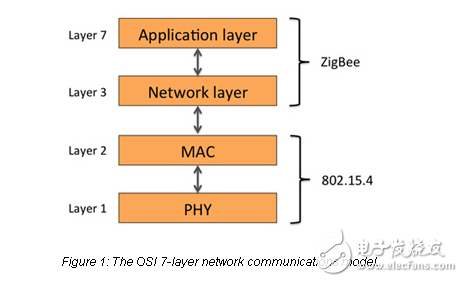
资料下载

了解使用ZigBee的无线照明控制的好处
了解使用ZigBee的无线照明控制的好处
介绍和产品重点
商业楼宇照明控制设备市场预计将从2010增加到2017倍,IMS研究项目年出货量将达到6160万台。为了满足日益严格的能源立法,降低能源消耗是推动这一增长的最大动力之一,美国能源部认识到,照明占商业大厦能源使用量的25.5%。虽然美国可能会通过能源立法和相关的刺激方案来安装照明控制,但欧洲和其他国家的其他国家正在看到这样的系统的吸收,因为建筑业主试图减少他们自己的消费。
目前安装的照明控制系统使用有线和无线连接。无线通信中,使用最广泛的技术是802.15.4标准,它定义了一个低速率无线个人区域网(LR-WPAN)也是ZigBee通信协议的基础上®。到目前为止,很多系统已经部署了专有的协议,但越来越多的公司,如楼宇自动化公司Daintree的网络和关键照明供应商飞利浦照明系统,采用标准的解决方案,如ZigBee®促进互操作性的需要。
本文将探讨ZigBee的好处和它的网状拓扑结构作为无线技术的选择照明控制。更具体地说,它将从领先的供应商看一些®ZigBee收发器解决方案;对芯片的em351系统从Silicon Labs,Jennic jn5148-001模块恩智浦和单独的无线电和单片机解决方案从爱特梅尔(at86rf231和ATmega2560);看到这些有助于更广泛的生态系统。

Understanding the standards
The word ZigBee® is rapidly becoming another of those brand names like Hoover, Sellotape, and even Google that have become nouns and verbs, referring to generic products and actions; respectively a vacuum cleaner, clear adhesive tape, and searching the Internet. ZigBee® of course comes from the ZigBee® Alliance, a non-profit association formed in 2002 to provide open wireless networking standards focused on monitoring, control and sensor applications. The Alliance’s activities are very much determined by its members, which come from all around the world and include large and small companies, public bodies / government agencies, universities, and other interested parties. Consequently, a number of standards have been formulated to address the needs of specific markets and applications such as: ZigBee® Building Automation, ZigBee® Remote Control and more recently ZigBee® Light Link, a standard designed to provide LED lighting controls for consumer products.
The prime purpose of the ZigBee® standards is to provide equipment manufacturers with an open-source specification that enables them to develop interoperable products. As such, it is essential to understand what the standards cover and, just as importantly, what they do not cover. Networking, whether wired or wireless, is mostly based on the OSI model, which defines seven layers from the physical layer through to the application layer. ZigBee® defines networking protocols that operate from layer 3 upwards but does not define layers 1 and 2. Instead, it relies on 802.15.4, one of the IEEE’s 802.15 groups of standards for wireless personal area networks (WPAN), to do this. This is often a source of confusion as devices that solely implement 802.15.4 may be referred to as ZigBee® transceivers when strictly they are not implementing any specific ZigBee® function, and are probably just as applicable to other low data rate WPAN applications supported by 802.15.4.
声明:本文内容及配图由入驻作者撰写或者入驻合作网站授权转载。文章观点仅代表作者本人,不代表电子发烧友网立场。文章及其配图仅供工程师学习之用,如有内容侵权或者其他违规问题,请联系本站处理。 举报投诉
- 相关下载
- 相关文章






